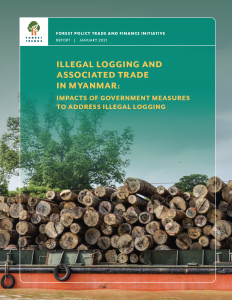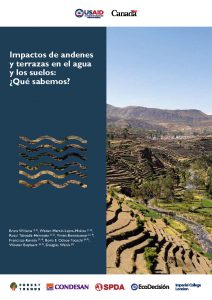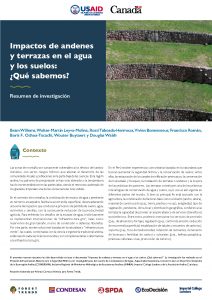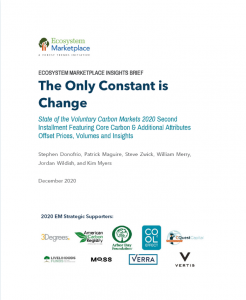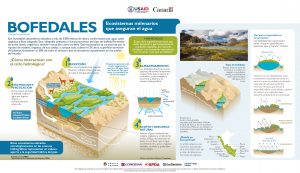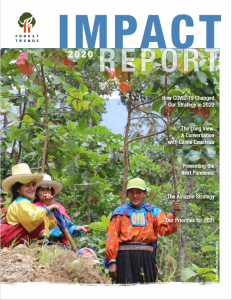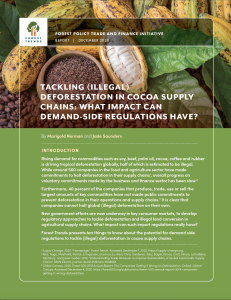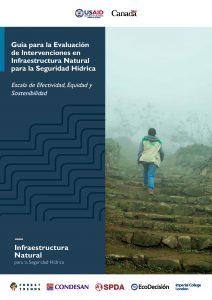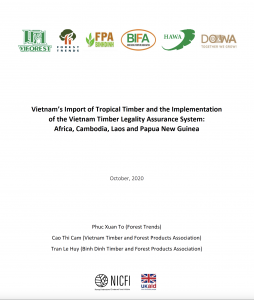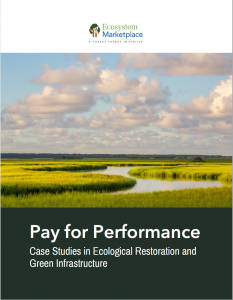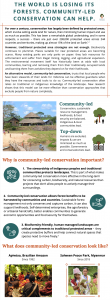Illegal logging and associated trade in Myanmar: Impacts of government measures to address illegal logging
Since 2000, the forests of Myanmar – some of the last remaining old growth forests in Southeast Asia – have been cleared at an ever-increasing rate. Between 1990 and 2020, 27% of the country’s forests was lost, with one-third of deforestation directly due to logging. At the same time, the economic importance of forest products[…]
Impactos de andenes y terrazas en el agua y los suelos: ¿Qué sabemos?
By Bram Willems, Walter-Martín Leyva-Molina, Rossi Taboada-Hermoza, Vivien Bonnesoeur, Francisco Román, Boris F. Ochoa-Tocachi, Wouter Buytaert, Douglas WalshEl presente estudio sistematiza los hallazgos que se reportan en la literatura científica acerca de los impactos de las terrazas como prácticas ancestrales y comunitarias de conservación de agua y suelos sobre los servicios ecosistémicos hidrológicos, con un enfoque particular en el Perú. La revisión estuvo centrada en artículos científicos que presentan y discuten resultados[…]
Dependent Documents
Resumen de investigación – Impactos de andenes y terrazas en el agua y los suelos: ¿Qué sabemos?
By Bram Willems, Walter-Martín Leyva-Molina, Rossi Taboada-Hermoza, Vivien Bonnesoeur, Francisco Román, Boris F. Ochoa-Tocachi, Wouter Buytaert y Douglas WalshState of the Voluntary Carbon Markets 2020: The Only Constant is Change
By Stephen Donofrio, Patrick Maguire, Steve Zwick, William Merry, Jordan Wildish, and Kim MyersBuilding upon the first installment of the State of the Voluntary Carbon Markets 2020, this second installment presents additional Ecosystem Marketplace data and analysis in light of recent recommendations from the Institute of International Finance’s Taskforce on Scaling Voluntary Carbon Markets to provide insights into: How voluntary carbon offset market participants price both core carbon […]
Email Signup
Subscribe to any of Forest Trends’ mailing lists to keep up with the news, publications, and events that interest you.
Having Trouble?
If you experience any technical difficulties on our site, please contact Genevieve Bennett, Communications Manager.
Infografía Bofedales
Ecosistemas milenarios que aseguran el agua
Esta infografía presenta el funcionamiento del tipo de bofedal formador de turba (suelo orgánico), también conocido como turbera. Este ecosistema se caracteriza por la riqueza de materia orgánica de sus suelos, y aunque solo cubren el 3% de la superficie terrestre del planeta, almacenan el 30 % de todo el carbono que se encuentra actualmente[…]
Forest Trends Impact Report 2020
You can’t run conservation trainings, gather partners, meet with government ministers, or conduct scientific field work during a pandemic – at least not the way you normally do. Yet in 2020, so much important work was done to lay the runway for tremendous climate action in 2021, even if that work didn’t dominate news headlines. […]
Tackling (illegal) deforestation in cocoa supply chains: What impact can demand-side regulations have?
By Marigold Norman and Jade SaundersRising demand for commodities such as soy, beef, palm oil, cocoa, coffee, and rubber is driving tropical deforestation globally, half of which is estimated to be illegal. Governments in the UK, EU, and the USA are now aiming to develop regulatory approaches to ensure imported agricultural commodities are not being sourced from deforested lands, or at[…]
Guía para la Evaluación de Intervenciones en Infraestructura Natural para la Seguridad Hídrica: Escala de Efectividad, Equidad y Sostenibilidad
By Jan Cassin, Bruno LocatelliLa Guía para la Evaluación de Intervenciones en Infraestructura Natural para la Seguridad Hídrica. Escala de Efectividad, Equidad y Sostenibilidad es un documento que permite orientar los esfuerzos de evaluación de proyectos e iniciativas vinculadas a infraestructura natural. En él se desarrolla una escala que permite medir el proceso gradual de avance de las intervenciones[…]
Vietnam’s Import of Tropical Timber and the Implementation of the Vietnam Timber Legality Assurance System: Africa, Cambodia, Laos, and Papua New Guinea.
By Phuc Xuan To, Cao Thi Cam, Tran Le HuyOn October 30, 2020, Vietnam started to implement its Timber Legality Assurance System (VNTLAS) with strict guidelines on how government authorities and companies would ensure the legality of Vietnam’s imported timber from high-risk sources. In this joint report between Forest Trends and the main timber trade associations of Vietnam, we explain the criteria and mechanisms[…]
Pay for Performance
Case Studies in Ecological Restoration and Green Infrastructure
By Steve ZwickIt’s been a quarter of a millennium since a small part of Prince George’s County, Maryland, was peeled off to become part of the United States’ new capital city of Washington, DC. The change in jurisdiction went unnoticed by the water cycle. Stormwater on both sides of the boundary spilled into the shared Chesapeake Bay […]

